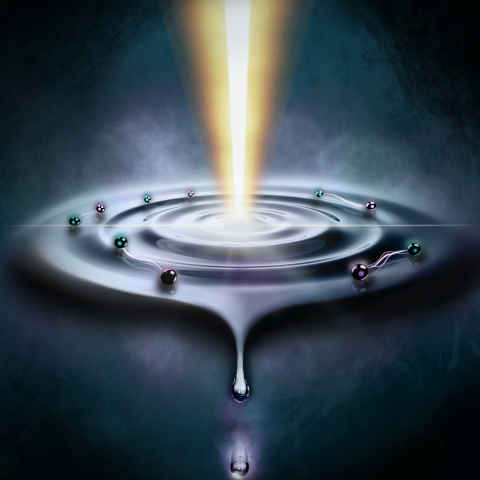Newsroom
Building a Fluid Atom by Atom: Researchers Study Emergent Hydrodynamic Behaviour of a Few-Fermion System

Macroscopic fluid dynamics is usually thought to emerge from vast numbers of microscopic particles. Now, scientists have studied fluid-like behaviour in systems of as few as ten ultracold lithium atoms.
How many particles does it take to form a fluid? A new study led by STRUCTURES researchers, published in Nature Physics, reveals that fluid-like collective behaviour can emerge with as few as ten ultracold lithium atoms. Inspired by observations in high-energy nuclear collisions, where similar phenomena are seen in systems with only a few dozen constituents, the researchers explored the onset of collectivity in quantum systems.
By precisely controlling the number of atoms and the strength of their interactions, they observed elliptic flow – a striking inversion of the initial aspect ratio that is a hallmark of hydrodynamic behaviour. This phenomenon, typically associated with much larger systems, challenges the conventional understanding that elliptic flow requires vast numbers of particles.
The study not only challenges long-held assumptions but also provides access to observables that remain elusive in high-energy nuclear collisions. This interdisciplinary effort, combining advanced experiments and theoretical modelling, paves the way for a deeper understanding of collective phenomena in quantum systems and opens exciting new avenues for research at the interface of quantum physics and particle physics.
Further information:
- Original Publication: Brandstetter, S., Lunt, P., Heintze, C. et al. Emergent interaction-driven elliptic flow of few fermionic atoms. Nat. Phys. (2025).
- News & Views: Fluids constructed atom by atom.
- STRUCTURES Blog post: The Curious Case of the World’s Smallest Fluid.
- Jochim Labs: Ultracold Quantum Gases.
